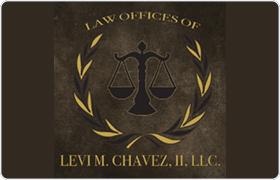La Jara DUI-DWI Lawyer, New Mexico
Sponsored Law Firm
-
 x
x

Click For More Info:
-
Law Offices of Levi M. Chavez, II, LLC
P.O. Box 7595 Albuquerque, NM 87194» view mapCriminal Defense Law Waging War Against Prosecution
As a client, your case will be examined through the lens of Levi’s training in police procedures and criminal investigations.
800-663-0170
Not enough matches for La Jara DUI-DWI lawyer.
Below are all La Jara lawyers.
James C. Kennedy
Entertainment, Patent, Intellectual Property, Criminal, Personal Injury
Status: In Good Standing
 Levi M. Chavez, II Albuquerque, NM
Levi M. Chavez, II Albuquerque, NM Practice AreasExpertise
Practice AreasExpertise
